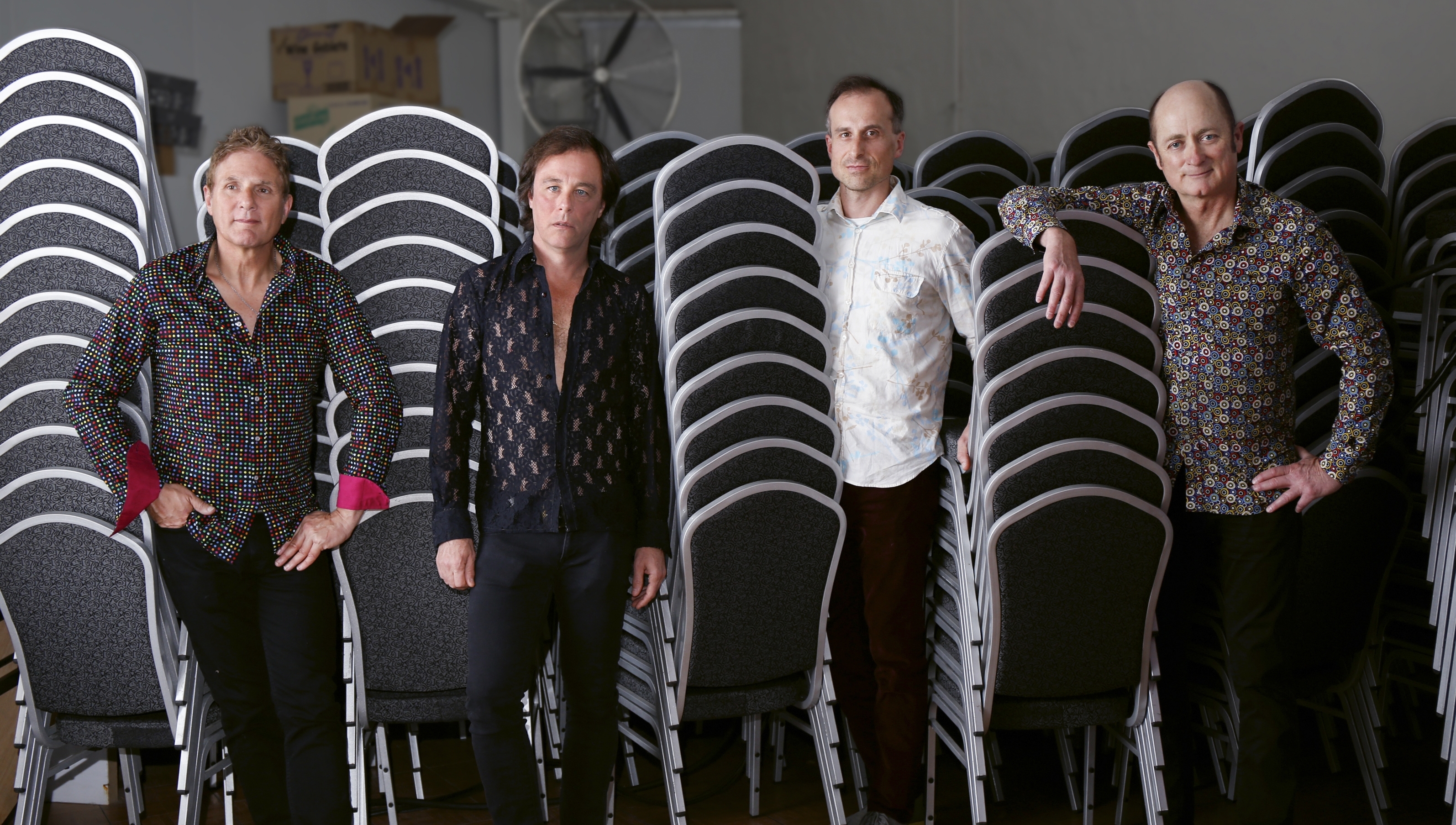“I’ve always known it was there and knew that it was considered a classic,” she says. “And I loved the cover photo, so it had made an impression on me. And I knew a couple of the songs, but as a complete work, it was really only in the last five years I’ve started to appreciate just how special an album it is.”
In the years prior to making Horses, Patti Smith experimented with a variety of art forms before deciding poetry was her calling. Several songs on Horses spawned from existing poems, which Smith and her band members (guitarist Lenny Kaye, keyboardist Richard Sohl, bass player Ivan Kral and drummer Jay Dee Daugherty) transformed into the unique rock songs featured on the album. Understandably, Smith’s literary proclivity has made learning the lyrics rather challenging.
“There are so many words in those songs,” says Cloher. “It’s like acting – you’ve got to learn your lines. Songs like Land (Horses) and Birdland are really poetry set to music. It’s a bit intimidating, because often it’s [about] getting into the author’s skin. But also it’s really exciting because it’s a bit different from doing a song with a nice neat melody and verse/chorus/verse/chorus.”
Indeed, nothing on Horses follows a particularly conventional structure. Perhaps the most elliptical track is Birdland – a continually expanding nine-minute narrative poem, where barely a single word is repeated. “I gave that one to Gareth,” Cloher laughs.
Horses is often cited as a major influence on punk music. With songs such as Birdland, the reggae toned Redondo Beach and the avant-garde melancholy of Elegie, it doesn’t greatly resemble the anarchic punk rock that emerged later in the decade. However, it’s unflinchingly raw and subversive, which coheres with punk’s original ethos.
“She’s rock’n’roll,” says Cloher. “That album is all sorts of things, but it’s amazingly loose, raw – it’s all the things that rock’n’roll should be. Loose-tight, that’s the best way to put it.”
Meanwhile, in contrast to the angry and somewhat brutish rendering of punk rock that appeared in later decades, Horses is an incredibly considered work. “I don’t really know a lot about the history of rock’n’roll, but it seems to me that this album married a very literary avant-garde artistic approach to rock’n’roll,” Cloher says. “It didn’t have to be a classic verse/chorus/verse/chorus, easy catchy sing-along. She had nine minute songs and they were full of words, they weren’t just like wig out jams. I think that whole world of art rock would’ve been totally inspired by Horses.”
Smith’s literary persuasion isn’t all that makes Horses aremarkable piece of work. Without even paying attention to her poetic lyricism, Smith communicates something very forceful through her vocal delivery.
“I’ve always identified with Patti vocally,” says Cloher. “Where her voice sits and the way she presents as a human being – she’s not conventional. I really identified with not feeling terribly conventional.”
Patti Smith was 28 years old when Horses came out. In her 2010 memoir Just Kids, she reveals that she’d barely even considered singing in public until not long before the albumwas made. For one of the most iconic and significant rock’n’roll artists ever, that’s somewhat ridiculous. Though, it could go some way to explaining her idiosyncratic vocal manner.
“She really locks into primal, rhythmic [energies],” says Cloher. “When you start to learn the songs, they’re full of interesting hooks and little mini-melodies, they swerve all around the place, but they sort of come back to things and you go, ‘There we are again.’ It’s a really interesting approach. Whilst there’s that literary element and she’s read well and knows a few things, it never loses that raw, animal, primal thing.”
For an eight-song album, Horses is hugely diverse. Cloher and co. are going to perform the album in its entirety with no extra adornments, singing a couple of songs each.
“I had all of these ideas about projections, trying to create a vibe, and then I was like, ‘It’s all there in the album.’ It’s all about performance, and I’ve just got the best technicians in sound and lighting to support the performers.
“Interestingly they were the only performers I asked. They all said yes. I went to performers that I knew could carry that performance through. Whenever you see Adalita or Gareth or Courtney, aside from being best known as indie rock or whatever, they’re also magnificent live performers. I think it really needs a really strong cast. It’ll be a pretty straight-ahead experience of Horses, but everyone will bring their unique interpretations – their own energy and soul to it.”
BY AUGUSTUS WELBY

